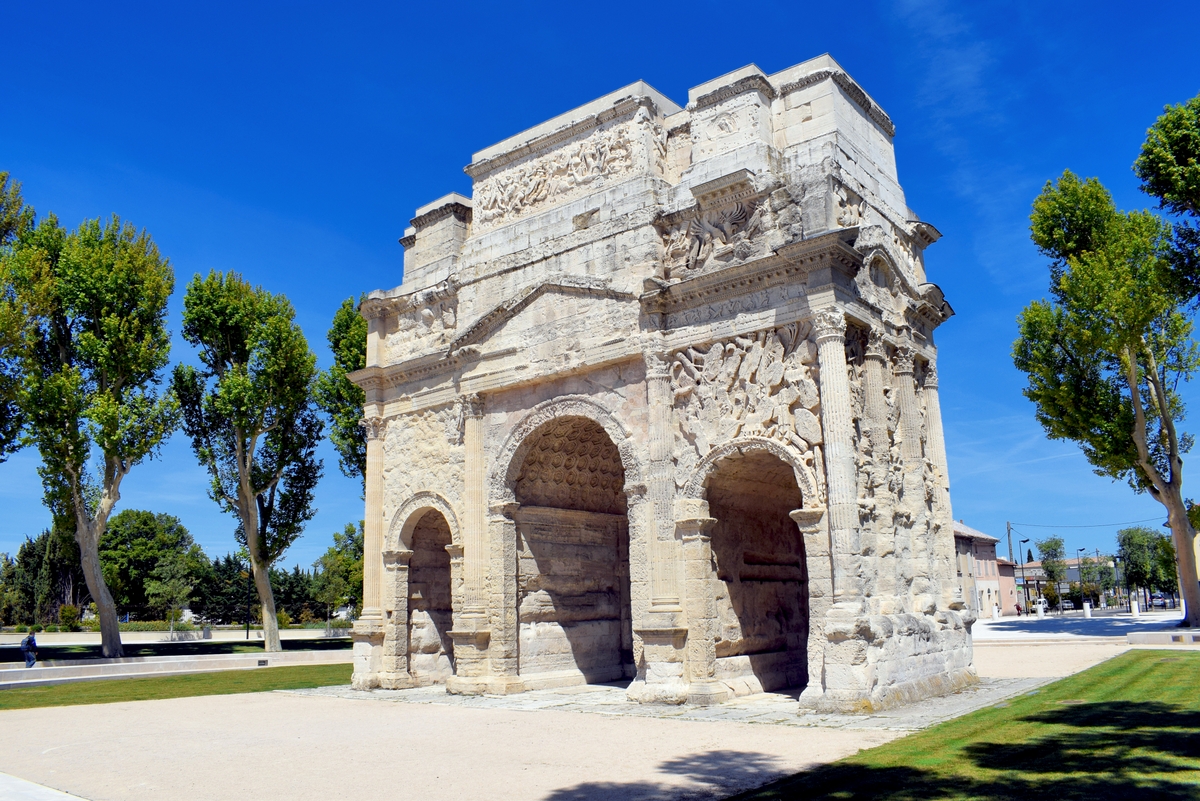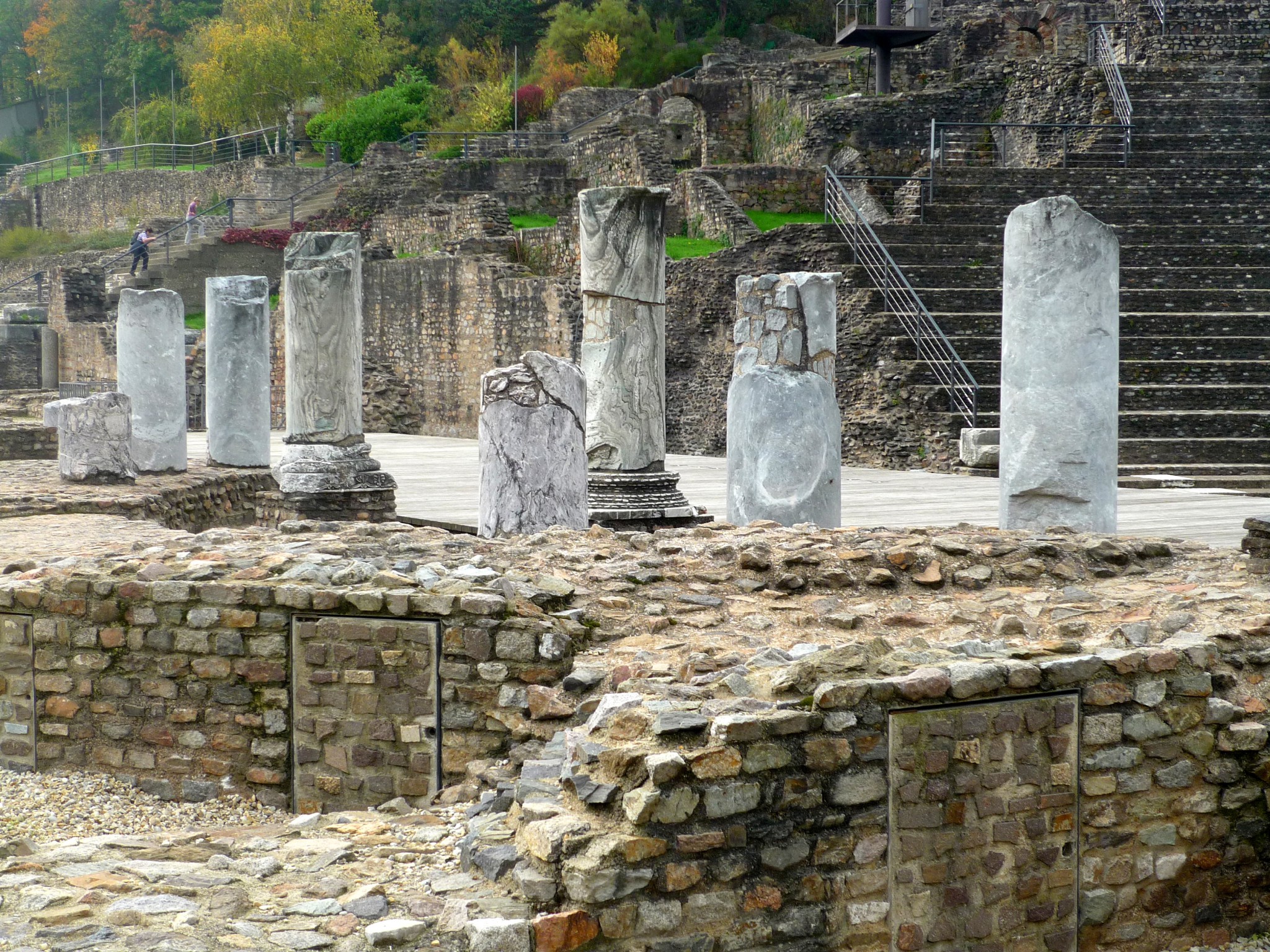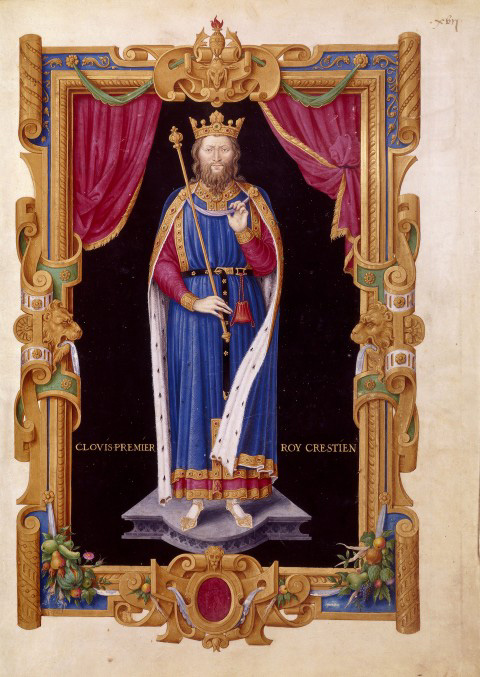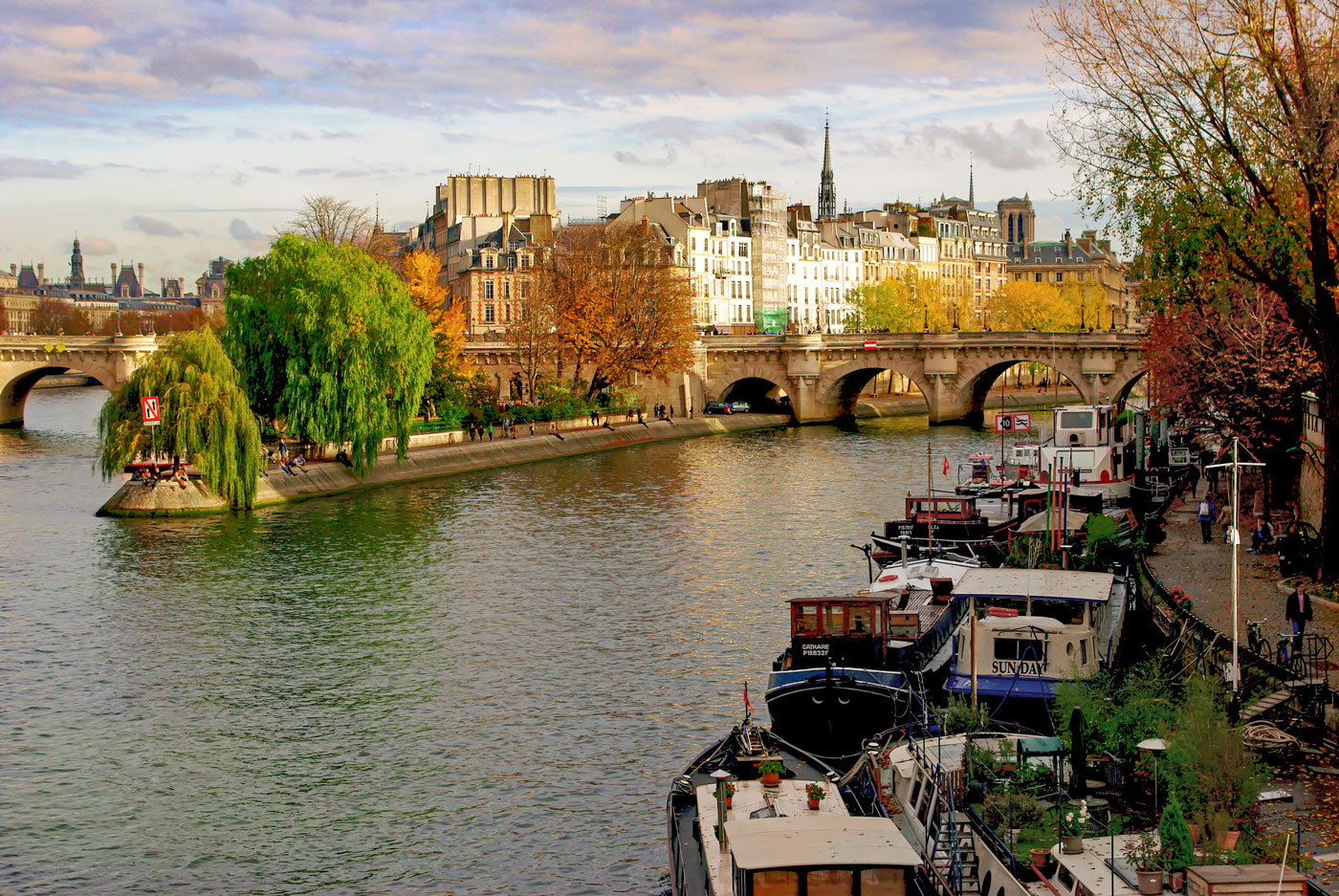In a previous article, I talked about what is France in French. I’d like to continue on this topic and ask the question: how France got its name? And when did France become France? If you would like to know the answer, we must go back in time… a long time ago, in Ancient times.
How France got its name: a historic account
France occupies an attractive land, easy to reach, with great natural resources.
A land through which people of many tribes and civilisations have passed and mingled.
Originating from central Europe, the Celts had made it the centre of their settlement after 1,000 B.C.
The earliest times: Gaul
Therefore why most of the Celtic land we now call France was known in ancient times as Gaul.
Or to be more exact, Transalpine Gaul to distinguish it from northern Italy, or Cisalpine Gaul.
It was the Romans who gave the name Gaul to this particular Celtic region.
The most famous Gaul is Vercingétorix, although many would argue it is truly Astérix, the hero of an extremely popular comic book series by Goscinny and Uderzo.

Gaul was much larger than modern France. It included Belgium, Luxembourg, parts of Switzerland, Germany, and the Netherlands.
By the first century B.C. Gaul was inhabited by numerous warring tribes of Celtic and Iberian race, with their own well-developed culture.
The Roman province of Provence
The Roman presence was by then already established in the south.
To the south-east, the Greek colonists landed on Provence and founded the great harbour city of Massilia (Marseille) about 600 B.C. In 125 B.C. the city asked the Romans for military help against their neighbours. When the Romans came, they simply decided to stay! They called the province “Provincia Nostra” (Our Province). Later the name became Provence.
The Romans built some of France’s most beautiful ancient buildings and cities: Pont du Gard, Maison Carrée of Nîmes, arena of Arles, theatre and triumphal arch at Orange, Roman city of Vaison-la-Romaine, amphitheatre in Lyon-Fourvière…

Julius Caesar: Veni, Vidi, Vici
Soon, profiting from the divisions of the Gallic tribes, Julius Caesar’s legions conquered the remainder of the land.
In fact, he came to Gaul by the invitation of the Celts as an ally against the Germans. Caesar did act as an ally and a liberator, only to exploit the Gauls in order to expand Roman power.
However, it was not without difficulty as a Gallic chieftain led a revolt against the Romans in 53 B.C. His name? Vercingétorix.
Julius Caesar defeated him at the siege of Alesia (in present-day Burgundy) in 52 B.C. and took him as a prisoner to Rome where he was dragged behind Caesar’s chariot in a triumphal procession. Oh, and to be eventually executed.

But this tragic outcome was quickly forgotten as the Roman period proved to be an era of peace and prosperity.
The Gallo-Romans and the romanisation of Gaul
The Gauls adopted (and welcomed) the laws, language, architecture, engineering methods, and customs of Rome.
The fact that France is today one of the “Latin” countries is due to the Roman occupation.

The Christian church, too, was first planted in the country in Roman times, although the early believers faced persecution and martyrdom.
Lyon was the Roman capital and centre of trade, and the Roman rule in Gaul lasted for more than four hundred years.

Gaul and the fall of the Roman Empire
It is commonly known that the Western Roman Empire “officially” ended on 4 September 476, when military leader Odoacer deposed Romulus Augustulus and proclaimed himself ruler of Italy.

With the fall of the Roman Empire began a new series of invasions.
Barbarian invaders had begun to appear in Gaul in the third century A.D., and as Germans, Visigoths, Vandals, Burgundians, and even the Huns from Asia succeeded each other, the land was devastated.
The least numerous of the invaders were the Franks. Originating from a region covering the right bank of the Rhine, from present-day Nassau to the Ruhr and Apeldoorn in Holland. That is on the edge of the Roman empire.
Yep, it seems like France owes a lot to present-day Germany!! (check out my article Germany in French)
To make a story short, the Franks simply became the masters of all the invaders in Gaul.
The kingdom of the Franks
And it happened that in the fifth century, the Germanic tribe of the Franks settled in Gaul.
One of their leaders, Clovis, became king of a Frankish tribe in 481 A.D.

In 486 he defeated the Gallo-Roman king Syagrius at Soissons.
Six years later, in 493, he made a far more important move by marrying the Burgundian Clotilda, the only Catholic princess in Gaul.
The Frankish king was later baptised by bishop St. Rémi in Reims in 496. Having spread Christianity throughout the land, he made himself master of almost the whole of Gaul.

By professing Christianity he gained the support of the clergy of Aquitaine (in the south-east) when he came to expel the Visigoths, who had adopted the Arian heresy.
Frankish Gaul
Frankish Gaul was a collection of ethnic, political and philosophical communities, linked in many ways by self-consciously distinct from one another.
The Gallic lands of the Franks were held together only by a loose central authority that reigned rather than ruled.
It is when emerged the name Francia, which replaced that of Gaul.
This period has been termed the Dark Ages…
Clovis was the first Merovingian, a dynasty that brought most of Gaul under its sway.
After Clovis’ death, the kingdom was divided among his descendants, and the several fragments were frequently at war.
By 623 there were two kingdoms held by Clovis’ descendants:
- Neustria (the centre, west, and south of modern France) with Paris as capital.
- Austrasia (the remainder and extending halfway into Germany) with Metz as capital.
Modern-day France included two additional kingdoms:
- Burgundy (along the Saône and Rhône valleys) with Lyon as capital.
- Aquitaine (the south-west of modern France) with Poitiers as capital.
Charlemagne, Emperor of the West
Charles, son of Pepin the Short and grandson of Charles Martel (who vanquished the Arabs at Poitiers in 732) became known as Charlemagne or Charles the Great.
He rose from being King of the Franks to become emperor of most of Western Europe.
He was a great ruler who conquered Saxony. On Christmas Day 800, after a mass in Rome, Pope Leo III unexpectedly crowned him “Emperor of the Romans” or “Emperor of the West”.

The Father of Europe
Charlemagne managed to unite most of Western Europe for the first time since the Roman Empire, and his empire also included parts of Europe that had never been under Roman nor Frankish rules. His empire extended from the River Elbe to beyond the Pyrenees and from the North Sea to halfway down the Italian peninsula.
For this reason, Charlemagne has been called the “Father of Europe” (Pater Europae) and is arguably the only historic celebrity celebrated by both French and German peoples.
He attempted to organise this vast area and to encourage the use of Latin, as a universal tongue, in administration and business.
Given the decay into which scholarship had long fallen, he promoted a revival of learning, superintended by the Anglo-Saxon scholar Alcuin of York.
Consequently, Charlemagne became the patron saint of schools, as French singer rightly put it:
🎶 Who had this crazy idea
One day to invent the school
It’s that holy Charlemagne
That darn Charlemagne! 🎶
However, the most important feature of Charlemagne’s rule is arguably its alliance of Church and State.
Charlemagne’s favourite residence was Aachen (in modern-day Germany) where he died on 28 January 814. The Emperor was buried in Aachen cathedral.
![Aachen Imperial-Cathedral © CEphoto - licence [CC BY-SA 3.0] from Wikimedia Commons](https://frenchmoments.eu/wp-content/uploads/2021/02/Aachen-Imperial-Cathedral-©-CEphoto-licence-CC-BY-SA-3.0-from-Wikimedia-Commons.jpg)
The Treaty of Verdun and its consequences
The great Emperor was succeeded by his son Louis the Pious, but after the latter’s death, his three sons divided up the empire between themselves by the Treaty of Verdun (843).
- Charles the Bald took the western part (modern-day France except for Brittany, parts of Belgium and both sides of the Pyrenees).
- Lothar ruled over the centre (parts of the Netherlands and Belgium, Luxembourg, most of the Rhineland, Eastern France, western Switzerland, Provence, northern Italy).
- Louis the Germanic reigned in the eastern part (most of western Germany).
![The division of Charlemagne's empire © FlyingPC licence [CC BY-SA 3.0] from Wikimedia Commons](https://frenchmoments.eu/wp-content/uploads/2021/02/Treaty-of-Verdun-843-©-FlyingPC-licence-CC-BY-SA-3.0-from-Wikimedia-Commons.png)
Henceforth, the centre and the west were to go their separate ways.
It was after a later settlement that part of the central kingdom was given to Lothar II and called Lotharingia, still preserved today in the name of the French province of Lorraine.
The French language birth certificate
On 14 February 842, Charles the Bald and Louis the Germanic concluded the Oaths of Strasbourg in the eponymous city, aiming to distance their brother Lothar from the division of the Empire bequeathed by their grandfather, Charlemagne. This is the oldest text written in both Romanesque and Germanic languages.

Indeed, the Romanesque text of the oaths has an essential symbolic significance, since it constitutes, so to speak, “the birth certificate of the French language” within the framework of a political agreement of historical importance.
How Gaul (modern-day France) got its name
As we mentioned earlier, it was the Romans who gave the name “Gallia” (Gaul) to the Celtic territory that corresponds more or less to modern-day France.
The etymology of the Latin term Gallia is not known with certainty, but it could itself be a loan from the Celtic.
Latin authors used the names Gallia (“Gaul“) and Galli (“Gaul“), plural of Gallus, to refer to the Celts settled in Gaul and Western Galatia, “Γαλατία” in Greek.
The name Gallia was first recorded by Porcius Cato around 168 BC, but its use is most likely much older.
So what did Gallia mean and where did it come from?
Well, the etymology of the Latin term Gallia is not known with certainty. Some speculated it could itself be a loan from the Celtic.
Perhaps it derived from the radical gal-, which was supposed to denote strength, a term that is in turn derived from the old Irish Gal “warrior fury”, also a radical from the Welsh “gallu” and the Breton “galloud”, both meaning power.
The Galli would therefore be “the strong”, “the powerful” or “the furious” ones.
By the way, the radical gal- or gali- would also be at the origin of the French words jaillir (to spring) and gaillard (strapping).
Here are a few Gallic equivalences in French and English:
- Gaul is la Gaule
- The people, the Gauls, are les Gaulois.
- The adjective Gallic, is in French: Gaulois/Gauloise.
- Lutetia (modern-day Paris) is known as Lutèce in French.
- Asterix the Gaul is… Astérix le Gaulois!
The Gallic rooster
But there is more…
It was not until the Renaissance that the Latin name Gallus was associated by analogy among scholars with its Latin homonym gallus “coq” or rooster.
This is why it became the emblematic animal of France!
Find out more about the Gallic rooster!

How France got its name thanks to… the Franks
So the Franks were a group of Germanic tribes that conquered Gaul in the 5th century.
The Romans called them Francus (singular), Franci, or gens Francorum (plural).
The first mention of the Franks in Roman sources dates back to the 3rd century. We know that they served in the Roman army since the days of Julius Caesar.
At the end of the 6th century, Franc referred to the free man. This noun can be traced back to the common Germanic frankō “javelin, spear”, attested in Old English franca and Old Norse frakka. Therefore, this would imply that the Frankish tribes derived their names from a totemic weapon (like the Saxons and their “short sword”).
When the Franks were a Roman franchise
Before we go further, let me introduce the notion of foederatus (federated peoples).
Foederati were peoples and cities bound by a treaty (foedus), with the Roman Empire.
It applies in particular to groups of “barbarian” mercenaries of various sizes. In exchange, they were allowed to settle within the Roman Empire.
And so, the Franks became foederati in 358 AD, when Emperor Julian let them settle in areas across northern Gaul.
In the Rhineland, Frankish settlers helped with the Roman defence by providing intelligence and a buffer state.
In the 5th century, the Franks levied Roman-like troops supported with a Roman-like armour and weapons industry. They became a Frankish, ie. a franchise.

So this is how France got its name!
The land of the Franks was called “Francia” (Francie in French).
By the 6th century, Francia was known as the land of the free men.
So France got its name thanks to the Franks… as the French too (les Français)!
But not only that.
Thus many towns and regions in Germany took the name of the Franks. The best known are the city of Frankfurt am Main (Francfort-sur-le-Main in French) and the region of Franconia in northern Bavaria (Franken in German, Franconie in French).
![Frankfurt © Thomas Wolf - licence [CC BY-SA 3.0de] from Wikimedia Commons](https://frenchmoments.eu/wp-content/uploads/2021/02/Frankfurt-©-Thomas-Wolf-licence-CC-BY-SA-3.0de-from-Wikimedia-Commons.jpg)
What’s the difference between François and Français?
François is a French masculine first name and an ancient form of the word Français (ie. “French” as a noun and adjective).
It is the French counterpart of the medieval Latin Franciscus meaning “of France”.
The etymology thus makes François (and the Frenchman) “the man of France”,
- either in the primary sense “the man from the land of the Franks”
- or “the man from the land of free men”.
François became a baptismal name in 1228, at the canonisation of Francis of Assisi (François d’Assise).
It was only with the spelling reform by the Académie française applied in 1835 that Français and François were distinguished, both in writing and orally.
The word Frank gave many variations of names:
- François
- Francis (usual form in English and also well established in French).
- Françoise
- Francine
- Franck
- Francesco (in Italian, literally little Frenchman)
François Ier, king of France
One of France’s greatest king bears the name of François: François Ier or Francis I (1494-1547).

King of France from 1515 until his death in 1547, François’ reign coincided with the spread of French Renaissance, thus attracting many Italian artists to work for him in Paris and the Loire Valley. One of them was Leonardo da Vinci, who brought the Mona Lisa with him.
![Chambord Castle © Arnaud_Scherer - licence [CC BY-SA 4.0] from Wikimedia Commons](https://frenchmoments.eu/wp-content/uploads/2016/03/Chambord-Castle-©-Arnaud_Scherer-licence-CC-BY-SA-4.0-from-Wikimedia-Commons1.jpg)
How Ile-de-France got its name
Around the year 1000, France did not yet correspond to the great country we know today. Or at least, the royal domain of the Capetians (the dynasty of the kings of France, from 987 onwards) only extended over a small area around Paris, the capital.
![France Map ca 1030 © Zigeuner - licence [CC BY-SA 3.0] from Wikimedia Commons](https://frenchmoments.eu/wp-content/uploads/2021/02/France-Map-ca-1030-©-Zigeuner-licence-CC-BY-SA-3.0-from-Wikimedia-Commons.png)
The historic province of Ile de France
The royal domain was given the name Ile de France (literally: Isle of France). A strange name if you look a little closer at the geography of the territory.
There are no major islands and the estate is even located in the middle of the land.
Does the name Ile de France come from the Ile de la Cité, the seat of royal and episcopal power?

The Pays de France
Within the Ile de France region, there is another territory that may have given its name to the royal domain.
This is the Pays de France (literally the land of France), also known as the plain of France.
The area extends in the north-east of Paris, corresponding approximately to the east of the Val d’Oise département, part of Seine-Saint-Denis and the north-western limit of Seine-et-Marne.
The designation “de France” appeared for the first time in 1126 to designate the abbey of St. Denis (Monasterii beati dyonisii de Francia).
Today, eight communes retain the toponym en-France:
- Baillet-en-France,
- Belloy-en-France,
- Bonneuil-en-France,
- Châtenay-en-France,
- Mareil-en-France,
- Puiseux-en-France,
- the famous commune of Roissy-en-France, site of Paris’ airport Charles-de-Gaulle,
- and also, since August 1989, Tremblay-en-France, which was previously called Tremblay-lès-Gonesse.
In fact, villages like Tremblay-en-France illustrate the contrasting land of the Plain of France.
![Tremblay-en-France-©-Clicksouris - licence [CC BY-SA 2.5] from Wikimedia Commons](https://frenchmoments.eu/wp-content/uploads/2021/02/Tremblay-en-France-©-Clicksouris-licence-CC-BY-SA-2.5-from-Wikimedia-Commons.jpg)
There you’ll find a juxtaposition of old rural villages surrounded by large cereal-growing areas, the economic activities surrounding the Roissy-Charles de Gaulle airport complex, and the large housing blocks in the north-east of Paris.
![Charles-de-Gaulle-Airport-by-Greenboost-[Public-Domain]](https://frenchmoments.eu/wp-content/uploads/2021/02/Charles-de-Gaulle-Airport-by-Greenboost-Public-Domain.jpg)
How the French franc got its name
Before the introduction of the euro currency in 1999, the official money of France was the French franc (FRF) or franc français.
On the 31st December 1998, the parity between the euro and the French franc was definitively fixed at 1 EUR = 6.55957 FRF.
![How France got its name - One French franc [Public Domain]](https://frenchmoments.eu/wp-content/uploads/2021/02/1-French-Franc-public-domain.jpg)
A king’s ransom paid to the English!
The first francs date back to the 14th century and were struck on the occasion of an event related to the Hundred Years’ War, a series of conflicts from 1337 to 1453 between France and England.
On 19 September 1356, the English captured King of France Jean II at the Battle of Poitiers.
Against the liberation of the king, the English demanded the sum of 4 million ecus.
To do so, the regent Charles (Jean II’s son) had a new coin made, a gold shield. The first coins were minted in Compiègne on 5 December 1360.
Franc à cheval
This gold shield weighing 3.87 g of fine gold represented the king on horseback, armed with a shield with a fleur-de-lis and brandishing the sword, hence his nickname “franc à cheval”.
![How France got its name - First Franc © Philippe pescatore licence [CC BY 1.0] from Wikimedia Commons](https://frenchmoments.eu/wp-content/uploads/2021/02/First-Franc-©-Philippe-pescatore-licence-CC-BY-1.0-from-Wikimedia-Commons.jpg)
The coin also included the term “Francorum Rex” (i.e.: King of the Franks).
In one of the three ordinances issued on 5 December 1360, John II wrote:
“We have been delivered to full prison and are free (franc) and delivered forever (…). We have ordained and order that the fine Golden coin which we now have made and intend to continue to make will be called Golden Franc”.
Thus, it is very likely that the name of this new currency played on the double meaning of the word “franc“:
- “free” (or “franc“),
- and “King of the Franks” referring to the Frankish origin of the kingdom.
The regent paid a deposit of 400,000 pounds (1,161 kilograms of gold) and the English released the king.
Thus, the franc owed its existence to a ransom the French people paid to the English that would free the king of France.
The franc today
Although the French franc disappeared with the introduction of the euro coins and notes in 2002, there are still many countries who currently use a franc.
There are mainly found in Africa with the CFA franc… although in the near future it might be replaced with the Eco, a common currency for West African countries.
In addition, two countries in Europe continue to use the franc: Switzerland and Liechtenstein (Swiss franc).
Finally, a number of French overseas collectivities use the CFP franc: French Polynesia, New Caledonia, and Wallis-and-Futuna.
Find out more!
- Our page on the Ile-de-France region
- What is France in French? – A Little Guide
- What is Germany in French? – A Little Guide
- The Wikipedia article about the Franks
- The Franks on the Ancient History Encyclopaedia

![How France got its name Featured Image [Public Domain via Wikimedia Commons]](https://frenchmoments.eu/wp-content/uploads/2021/02/How-France-got-its-name-Featured-Image-Public-Domain-via-Wikimedia-Commons-scaled.jpg)


